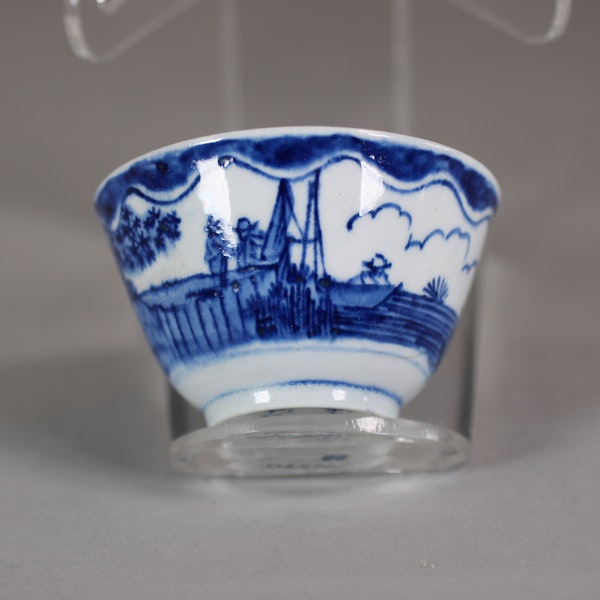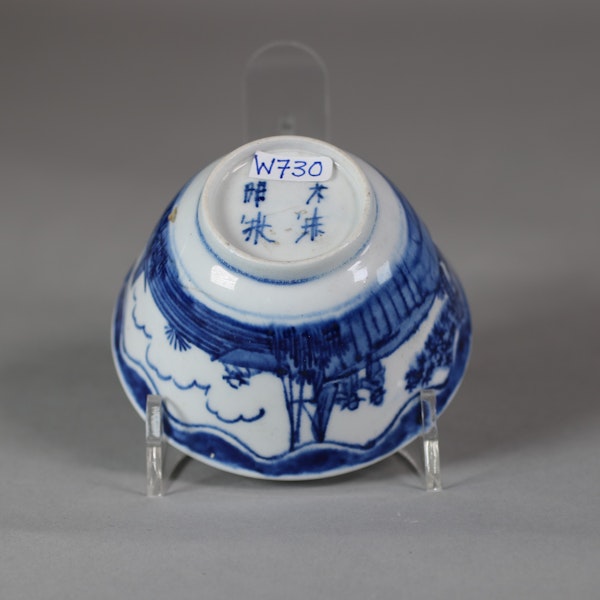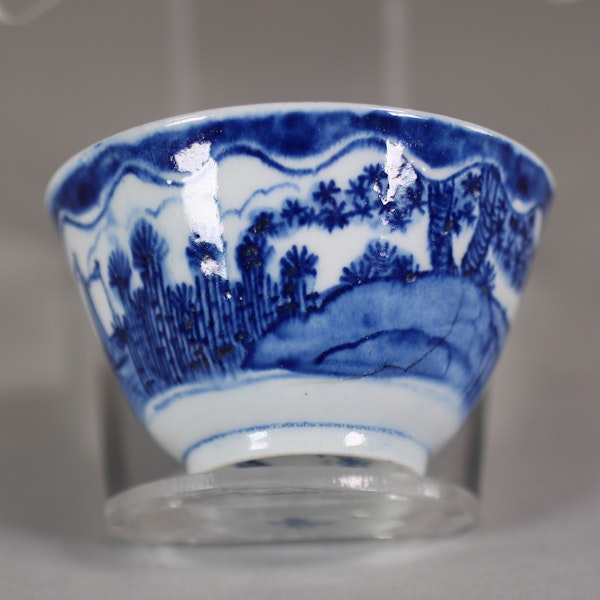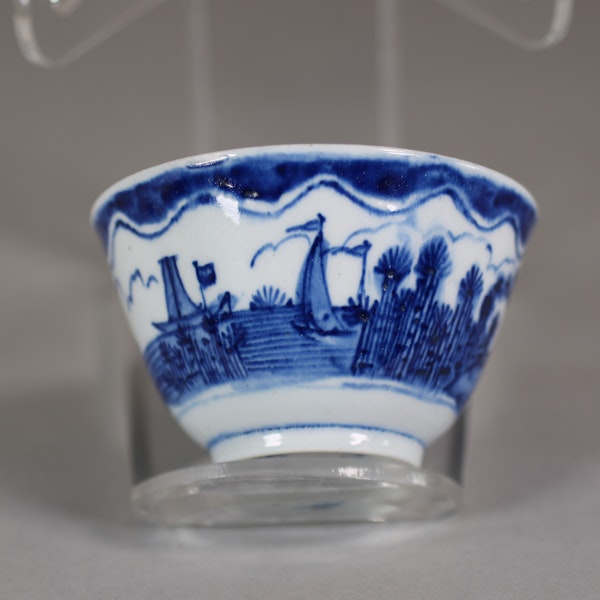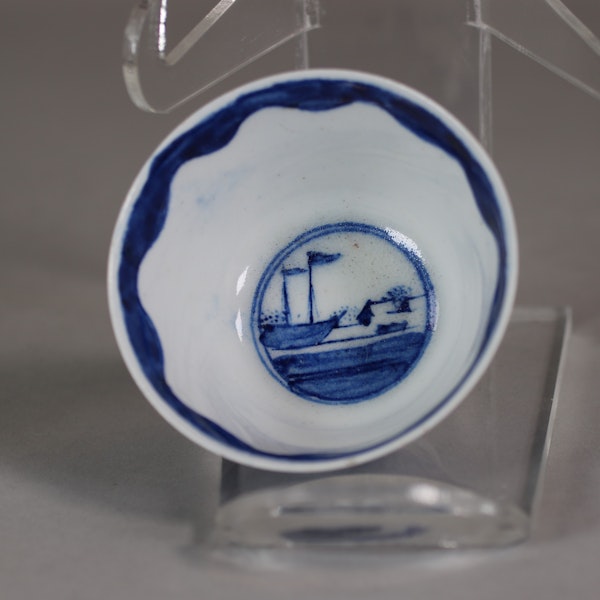Rare Bow blue and white teabowl painted in the Dutch style, c.1750
Rare Bow blue and white teabowl painted in the Dutch style, c.1750
POA
Description
Rare Bow blue and white teabowl painted in the Dutch style, c.1750, with an undulating blue band to the rim and a continuous watery landscape with figures on the shore amongst bamboo and pine trees, several sailing boats and a two-masted sailing ship visible on the water beyond, the interior with a further undulating band to the rim and central roundel containing a boat sailing along the water’s edge, the base with a four character mark and incised with the letter ‘R’.
Condition: Good
Notes:
For information about the incised ‘R’ mark on Bow porcelain, see Gabszewicz, 2000, ‘Bow Porcelain: the incised 'R' marked group and associated wares’ in ‘Transactions of the English Ceramic Circle, vol.17, part 2, pp.275-95. The pattern appears to be based on a design by the Dutch Delft painter Frederik van Frijtom, and is found on a delft plate illustrated in A. Vecht, 1968, ‘Frederik Van Fijtom, Life and Work of a Dutch Pottery Decorator’, Amsterdam, p.76, pl.40. The Dutch design was itself later imitated and appeared on Chinese and Japanese Arita porcelains. Two porcelain teabowls, one Chinese and the other Bow, are illustrated in Simon Spero, 2001, ‘English Porcelain and Enamels 1745-1791’, London, p.25, pl.37, who argues that Bow examples were in fact derived from Arita porcelain. For the pattern on Bow porcelain see Bernard Watney, 1963, ‘English Blue and White Porcelain of the 18th century’, London, pl.10a; also Anton Gabszewicz and Geoffrey Freeman, 1982, ‘Bow Porcelain, The Collection Formed by Geoffrey Freeman’, London, p.63, pl.81-83.
Provenance:
Probably from the B. Watney collection
| item details | |
|---|---|
| Material and Technique | Ceramic with blue decoration |
| Origin | British |
| Period | 18th Century |
| Condition | Excellent |
Product REF: W730
